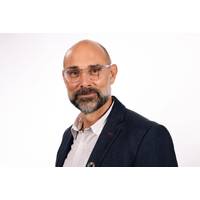
Dr. Siddorn Tapped to Transform NOC Research Strategy
NOC in 2020 as Associate Director of Digital Ocean. He has championed the embedding of digital approaches to furthering science, including through the use of digital twins. He succeeds Professor Angela Hatton who is leaving the NOC after over six years in the role.Prior to NOC, Dr. Siddorn was at the Met Office where he was Head of the Ocean Forecasting R&D Department (OFRD) group and co-chair of the National Partnership for Ocean Prediction (NPOP). As Head of OFRD he had responsibility for developing models and satellite analyses for weather and climate applications. His personal research was on
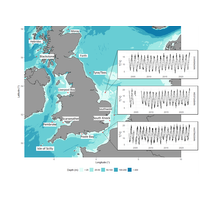
New WaveNet Data Shows Record UK Sea Temperatures
water contains less oxygen, threatening marine habitats and larger fish species.It is projected that U.K. sea water temperatures will continue to rise over the coming century, with models suggesting an increase of between 0.25°C and 0.4°C per decade. The WaveNet data, which is incorporated into Met Office meteorological models, will help forecasters, local authorities, and scientists to better understand the risks and impacts of climate change on the marine environment and coastal communities

CGG Joins UK Research Assessing Ecosystem Impact of Offshore Wind Farms
and the conservation of species around offshore wind farms while also supporting wind farm developers to design long-term environmental monitoring strategies. The project will utilize data supplied by Mona Offshore Wind Ltd. (a joint venture between EnBW and BP), ENI, Ørsted, RWE, and The Met Office, among others. The £2M, four-year ECOWind-ACCELERATE project is funded by the UK Natural Environment Research Council (NERC) and The Crown Estate, with support from the Department for Environment, Food and Rural Affairs (Defra) as part of the ECOWind program.CGG will provide high-performance
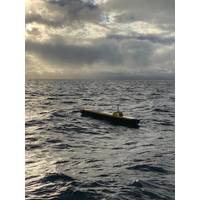
AutoNaut Completes a 16-week, 4,000-mile Mission on the Atlantic continental shelf break
develop the science program. Other stakeholders became associated in the data collection program as the project developed and the route changed. These included the Irish Marine Institute, Galway Marine Institute of Technology, OSNAP and iFADO partners, NOC, CEFAS, University of Exeter, and the UK Met Office. The data collected are made freely available to all partners.The sensor fit for this deployment was loaned to AutoNaut, for which we are grateful. It comprised:Nortek Signature500 ADCP, fitted through the hullSeiche PAM, fitted to a small fin below the hull rather than as a towed arrayAande
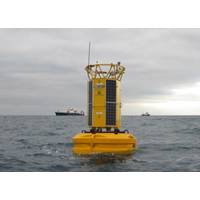
UK Met Office Selects Sonardyne Acoustic Releases for Mooring Weather Buoys
Acoustic release transponders from Sonardyne were chosen by the UK’s Met Office to secure its network of moored buoy Marine Automatic Weather Stations (MAWS) in the North Sea and Atlantic Ocean.Sonardyne’s RT 6s and deck topside command units will be used to support deployment and retrieval of the MAWS buoys from theirlocations as far north as the Faroe-Shetland Channel and down to the southwestern approaches and the English Channel in the south.Because many of the buoys are moored in more harsh North Atlantic waters, they have to be designed to withstand extreme conditions, includingsignifi
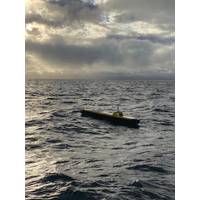
Case Study: Autonaut Put to the Test
develop the science program. Other stakeholders became associated in the data collection program as the project developed and the route changed. These included the Irish Marine Institute, Galway Marine Institute of Technology, OSNAP and iFADO partners, NOC, CEFAS, University of Exeter, and the UK Met Office. The data collected are made freely available to all partners.The sensor fit for this deployment was loaned to AutoNaut, for which we are grateful. It comprised:Nortek Signature500 ADCP, fitted through the hullSeiche PAM, fitted to a small fin below the hull rather than as a towed arrayAande
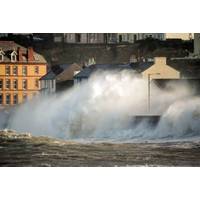
UK Researchers Collaborate on Climate Solutions
UK climate science organizations announced a plan to form a new national alliance focused on climate solutions for society. Seven Natural Environment Research Council (NERC) supported centers and the Met Office will work together as the new UK National Climate Science Partnership (UKNCSP) to respond to threats posed by a rapidly changing climate.The solutions-focused approach is aimed to support the UK Government in developing and evaluating solutions to the challenges of mitigating and adapting to climate change. The partnership will also work with the public and private sectors to ensure decision

Ocean Influencer: Dr. Jyotika Virmani, Schmidt Ocean Institute
. It was here her career became one of adversity. Environmental adversity, that is.Shortly after Virmani moved back to England to take a job with the Met (Meteorological) Office, the Icelandic volcano Eyjafjallajökull erupted in April 2010. She had a direct role in the ensuing crisis since the Met Office functions as the regional prediction center for global ash production. Later that month, the Deepwater Horizon oil spill occurred in the Gulf of Mexico, near where Virmani had previously lived and worked. She was asked to return to Florida to help with the spill’s aftermath and did so later
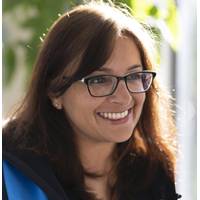
Schmidt Appoints Virmani as Executive Director
;We place the highest priority on finding the best talent, and we’ve found an exceptional leader in Dr. Virmani,” said Eric Schmidt, co-founder of Schmidt Ocean Institute.Virmani previously worked as associate director of the Florida Institute of Oceanography and as a senior scientist at the Met Office, the United Kingdom’s national weather service.She has a bachelor’s degree in physics from Imperial College London, a master’s degree in atmospheric and marine environmental science from the State University of New York (SUNY) at Stony Brook and a doctorate in physical oceanography



 February 2024
February 2024





